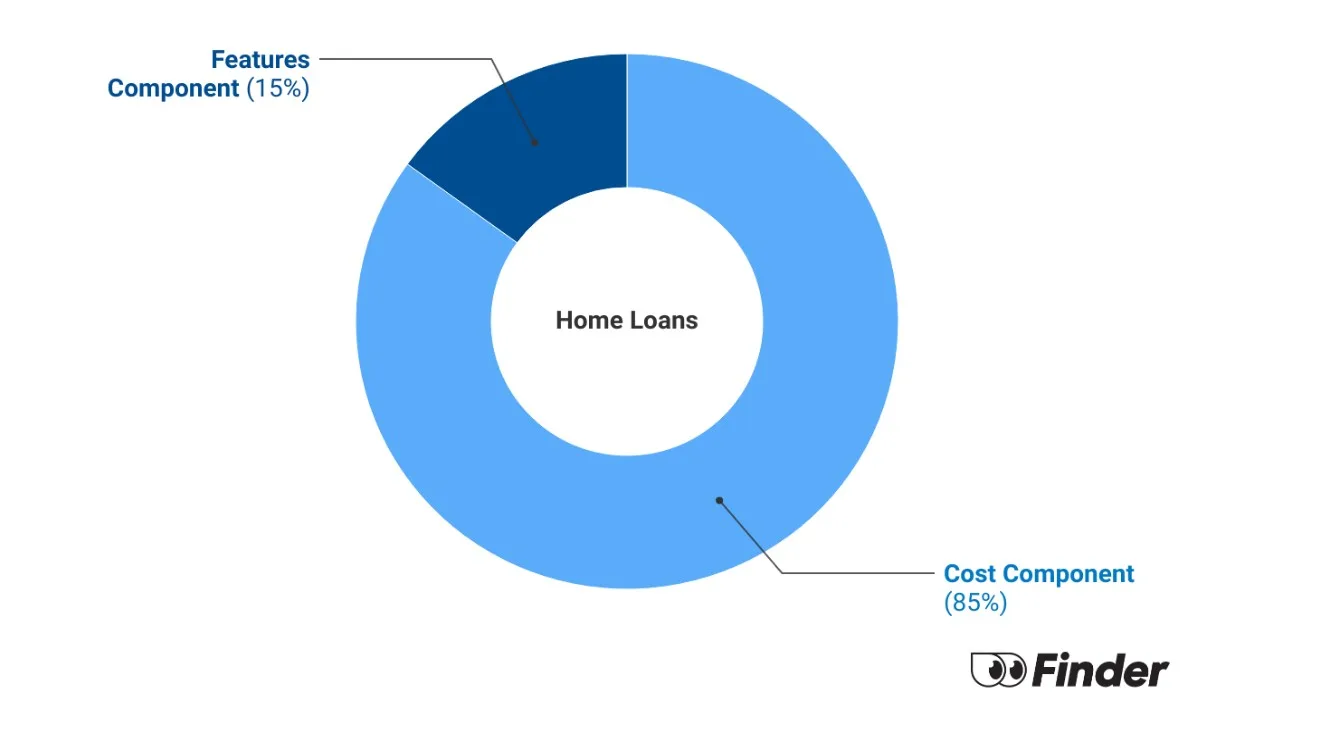Compare other products
We currently don't have that product, but here are others to consider:
How we picked theseKey takeaways
- An owner-occupier home loan must be used for the purpose of purchasing a home to live in.
- Owner-occupiers are treated quite differently from investors for tax purposes.
- If you convert your home to an investment property, you will need to switch your home loan to a new investment loan.
What is an owner occupier?
An owner-occupier is someone who lives in a residential property as their principal place of residence. That is, you live in your own home. They are different from an investor, who purchases a property to use as an investment to create wealth, not as a place to live.
What does 'principal place of residence' mean?
- You live in the home with your family and your belongings are there.
- You receive mail and are registered on the electoral roll at that address.
- You have utilities connected to the property.
For taxation purposes, the ATO also considers other factors, such as whether the home has been used to produce income that can be taxed. If your property is your principal place of residence, you can claim an exemption from capital gains tax (CGT) when selling your home.
How are owner-occupier loans different from other loans?
The key difference between an owner-occupier home loan and other home loans (such as investment loans) is the loan's purpose. For an owner occupier home loan you must be planning to live in the home you're buying, not renting it out.
In terms of mortgage features and loan details, owner occupier home loans are like other loans in that they have an interest rate and comparison rate, rate types, minimum and maximum loan amounts, various loan fees and maximum (and maximum insured) loan to value ratios.
What to look for in an owner occupier home loan vs an investment loan
- The interest rate. Interest rates tend to be lower than investment loans (if looking at otherwise similar mortgages). This is because lenders regard investments as higher risk than homes.
- Rate types. OO loans can be either fixed or variable. This is no different to investment loans. You can also choose to split your rate into fixed and variable portions.
- Loan to value ratio. Loan to value ratio (LVR) refers to the amount you can borrow in relation to the value of the property. The higher the LVR, the more you can borrow and the smaller your deposit needs to be. While both types of loans can have maximum insured LVRs of up to 95% (meaning you only need a 5% deposit), it is more common on OO loans. A lender may require a bigger deposit for an investment loan.
- First home owner grants. If you've never owned property before, you may qualify for various government grants and stamp duty concessions or exemptions. This is something you can't get if you're buying an investment. Keep in mind that grants and concessions differ by state and territory, so you will need to check your local policies.
- Repayment type. Owner-occupier loans can have either principal and interest or interest only repayments, just like investment loans. Interest only loans are particularly popular with investors as a way of minimising non-tax-deductible investment costs. But owner-occupiers may use them too if they want to minimise their repayments in the short term.
- Features. Owner-occupier loans may come with features like a redraw facility or an offset account. These features are available on investment loans too.

"While owner occupier home loans can look similar to investment loans and other products, the specific needs of the borrower may differ.
For example, an investor may care more about getting a loan with interest only repayments while an owner-occupier may care about getting a lower interest rate. A first home buyer with a small deposit saved may look for a loan with a high LVR and have their parents act as a guarantor to help them qualify for the home loan.
For borrowers who want to build their new home before they live in it, they too will need a different structure. A construction loan can provide the finance in stages depending on the stage of construction."
Finder survey: What do Australians think would be the average interest rate on an owner-occupier home loan with a 20% deposit?
Response | |
|---|---|
| 5-7% | 57.37% |
| 3-5% | 31.83% |
| 7-9% | 6.56% |
| 1-3% | 4.23% |
Can I change from an owner-occupied property to an investment property?
If you convert your home to an investment property, you will need to switch your home loan to a new investment loan. Depending on your lender's policies, you can either apply for a new investment loan or make a variation to your current loan and convert it to an investment loan. Your lender may have a variation form to complete or you may have to call and speak to a lending specialist.
You can also refinance to a new loan with a new lender if you think there's a better deal available. Just be sure to compare investment loan rates and look at exit and switching fees.
Speaking to a mortgage broker is also a good idea, as they can present you with multiple options and help you determine the optimal way to structure your current or new mortgages.
What does the ATO say about changing from an OO property to an investment?
- Your costs to purchase the property and the date you signed the contract. This is used to calculate your capital gains when you sell the property.
- Records of any rental income
- Records of all expenses incurred in maintaining or repairing the property, which you can claim as deductions.
Frequently asked questions about owner occupier home loans
What is Finder Score?
The Finder Score crunches 7,000 home loans across 120+ lenders. It takes into account the product's interest rate, fees and features, as well as the type of loan eg investor, variable, fixed rate - this gives you a simple score out of 10.
To provide a Score, we compare like-for-like loans. So if you're comparing the best home loans for cashback, you can see how each home loan stacks up against other home loans with the same borrower type, rate type and repayment type. We also take into consideration the amount of cashback offered when calculating the Score so you can tell if it's really worth it.
Read the full Finder Score breakdown
Ask a question
More guides on Finder
-
Calculate the income needed to buy a home in any suburb in Australia
Work out how much you need to earn to buy a house in any Australian suburb.
-
How much does it cost to build a house?
How to accurately estimate the cost of building your own house.
-
Why are fixed rates sometimes lower than variable rates?
When fixed rates fall below variable rates, it could portend ominous economic outcomes. We explain how it all works.
-
Home Loans For Discharged Bankrupts
Discharged bankrupts start off their financial state fresh, but some may still find it difficult to get a mortgage. Discharged bankrupts may still get a home loan, but with stricter conditions and higher loan rates.
-
No doc home loans
No doc home loans are rare in Australia, but not impossible to find. Here's how to get a loan without providing evidence of income.
-
Single Income Home Loan
Find out how you can afford a property on a single income and learn how to compare different loans to get the best deal.
-
Bridging Loans
If you haven't sold your house yet, but want to buy your next one before the sale is completed a bridging loan may be able to help. Read on to discover how bridging finance can help.
-
Basic Variable Rate Home Loan
Compare variable home loan rates (big 4 and smaller lenders) so you can get a home loan with a cheap interest rate and no expensive features you won't use.
-
Low deposit home loans
You may be able to get a low deposit home loan with just a 5% cash deposit. Here are the lenders who are more likely to lend you a 95% loan.
-
Bad credit home loans
Find out whether you can get a home loan application approved by a lender if you have bad credit.
